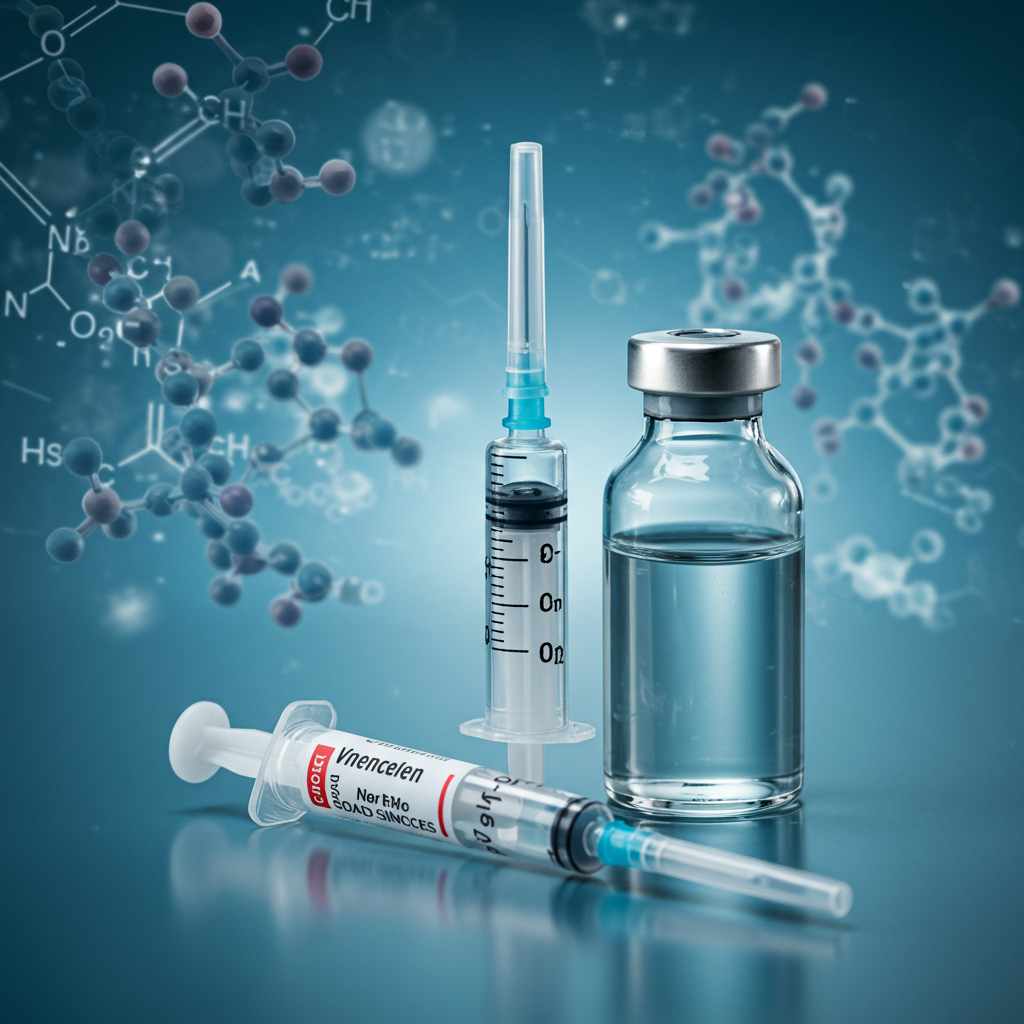The fight against HIV/AIDS has seen incredible advancements, transforming a once-fatal diagnosis into a manageable chronic condition for many. Yet, limitations persist, particularly around daily medication burdens, potential side effects, and the constant threat of drug resistance. Now, a groundbreaking new option has emerged: a long-acting, twice-yearly injection from Gilead Sciences, approved by the FDA under the name Yeztugo for HIV prevention and also available as Sunlenca for treatment-resistant HIV.
This revolutionary drug, lenacapavir, represents the culmination of a decades-long scientific quest, overcoming immense challenges that many researchers believed were impossible. Its journey from a seemingly “undruggable” target to a highly potent, long-lasting injectable tells a compelling story of scientific vision, perseverance, and innovation.
From Daily Pills to a Pandemic Transformed
Back in the mid-1990s, the AIDS epidemic raged globally, claiming over a million lives annually and leaving millions newly infected. The approval of the first protease inhibitor in 1995 and the subsequent advent of Highly Active Antiretroviral Therapy (HAART) marked a turning point. These early drug cocktails dramatically suppressed the virus, offering a lifeline.
However, life on early HAART regimens was far from easy. Patients often faced taking up to 30 pills a day on strict schedules, leading to potential drug resistance and treatment failure if doses were missed. Debilitating side effects like severe nausea, diarrhea, and visible changes in body shape made adherence incredibly challenging. Many patients, despite the life-saving benefits, found the regimen intolerable and discontinued treatment. Drug resistance remained a constant threat, and the high cost limited access in less wealthy nations, leaving significant unmet needs.
Gilead Sciences, an emerging biotech company at the time, became a key player in this fight with the 2001 approval of tenofovir disoproxil fumarate (TDF). Combined with emtricitabine, TDF formed the backbone of highly effective, more tolerable therapies that became standard of care, solidifying Gilead’s leadership in HIV treatment. Yet, even with these successes, the scientific quest continued for new, potentially better ways to combat the virus.
Targeting the Undruggable: The HIV Capsid
Around 2005, a pioneering idea began to take shape within Gilead. Inspired by research on the unique, cone-like structure of the HIV capsid – a protein shell protecting the virus’s genetic material – virologist Tomas Cihlar wondered if this structure could be a novel drug target. Studies had shown that small alterations in the capsid structure dramatically reduced viral infectivity, suggesting it played a critical role beyond simple protection.
This concept was met with skepticism. Unlike enzymes, which have clear binding sites, structural proteins like the capsid were widely considered “undruggable.” Furthermore, the high concentration of capsid protein in infected cells made researchers doubt a small molecule drug could effectively interfere without requiring dangerously high doses in patients.
Despite the doubts, Cihlar persisted, advocating for a capsid-targeting program. The challenge was immense: finding a molecule that could disrupt the precise assembly of the capsid, like placing a “ping-pong ball” between “two bowling balls” (protein monomers) that needed to come together.
The Grueling Chemistry and a Flash of Inspiration
The early phase of the program was arduous. Chemist Stephen Yant developed novel screening methods to test Gilead’s vast compound library against capsid assembly, identifying molecules that either slowed or accelerated the process – both of which interfered with viral replication. While promising, these initial compounds were weak and unstable.
Medicinal chemist John Link joined the effort, driven by a deep personal connection to the epidemic. His mission was clear: optimize these compounds to create a potent and stable drug. However, the inhibitor series proved a dead end after years of effort; modifications barely improved potency. The team was nearing the point of giving up.
A pivotal moment arrived in 2010 when Cihlar learned about PF74, a capsid-targeting molecule discovered by a disbanded Pfizer team led by Wade Blair. Although Pfizer had terminated its development due to poor potency and severe instability – it was metabolized within minutes in liver cells, effectively vanishing from the bloodstream – PF74 represented a new chemical class and a crucial starting point for Gilead’s chemists.
Building the Breakthrough Molecule: Lenacapavir
Armed with the PF74 structure and a renewed sense of possibility, Link’s team embarked on a painstaking journey. Over six long years, they designed and synthesized more than 3,000 different compounds. It was a “Whac-A-Mole” challenge: improving potency often worsened stability, and vice versa.
They had to make molecules larger and more complex than typical oral drugs to both fit the precise binding site on the capsid and “armor-plate” the molecule against metabolic destruction. This painstaking effort finally yielded GS-6207, later named lenacapavir. This molecule was a staggering 12,000 times more potent than PF74 and remarkably stable, with minimal hepatic extraction. Its structure was so unusual, chemists described it as looking like an “alien molecule” that “breaks all the rules” typically associated with orally bioavailable drugs.
From “Brick Dust” to a Twice-Yearly Injection
Lenacapavir’s unique structure, designed for potency and stability against metabolic breakdown, presented a new challenge: extremely low solubility in water. This made formulating it into a standard oral tablet nearly impossible – it was effectively “brick dust.”
But this challenge sparked an innovation. Because lenacapavir was so incredibly potent and stable, a tiny amount could theoretically remain active in the body for months. The team, led by formulator Roshy Pakdaman, conceived an unprecedented delivery method: a subcutaneous injection of a suspension of lenacapavir particles that would dissolve slowly over time from the injection site.
This bold approach transformed the initial goal of a daily pill into the vision of a revolutionary long-acting injection administered perhaps just twice a year – a radical improvement over existing daily oral pills or even other long-acting injectables requiring administration every two months.
Clinical Success and Expanding Access
Clinical trials, overseen by physician Martin Rhee, began cautiously but soon demonstrated the drug’s power. Initial studies showed that lenacapavir lingered in the body for months and was well-tolerated. Phase Ib trials in people with HIV revealed dramatic antiviral activity, reducing viral loads by 100-fold on its own – a rare feat for a single agent.
Given its unique mechanism targeting the capsid, lenacapavir proved particularly valuable for individuals with multidrug-resistant HIV, offering a last-resort option when other treatments had failed. This led to its initial FDA approval in December 2022 under the name Sunlenca for adults with treatment-resistant HIV.
Building on this success, Gilead pursued approval for HIV prevention (PrEP). Landmark Phase III trials, PURPOSE I and PURPOSE II, involving thousands of participants, demonstrated remarkable effectiveness. PURPOSE I, in cisgender women, showed 100% efficacy (zero infections) in the lenacapavir arm. Across both trials, lenacapavir achieved 99.9% overall effectiveness in preventing new HIV infections, proving superior to previous daily oral PrEP options like Truvada. Based on this compelling data, the FDA approved lenacapavir (as Yeztugo) for HIV prevention in at-risk adults and adolescents in June 2024.
A Game Changer for Ending the Epidemic?
The approval of a twice-yearly HIV prevention injection is hailed as a monumental step forward. Its convenience addresses significant barriers to adherence and uptake associated with daily pills, including forgetting doses and the stigma of being seen with HIV-related medication. For marginalized communities, including communities of color, migrants, and transgender individuals who face healthcare disparities and high infection rates, a discreet, long-acting option could be transformative. Public health experts like Moupali Das see its potential as functionally a “chemical vaccine,” offering robust protection without the daily reminder of risk.
While the list price for Yeztugo in the U.S. is set at $28,218 per year (comparable to other branded PrEP options), Gilead has outlined plans for patient assistance programs and global access initiatives, including licensing generic manufacturers to produce lower-cost versions in low- and middle-income countries.
Optimism abounds regarding lenacapavir’s potential to reshape the PrEP market and significantly impact the global epidemic. However, challenges remain, including ensuring equitable access, overcoming potential resistance from insurers regarding cost, and contributing to the broader societal destigmatization of HIV prevention. Furthermore, recent funding cuts to vital HIV vaccine research highlight that while long-acting prevention is a crucial tool, the fight against HIV requires multifaceted efforts on all fronts.
The journey of lenacapavir underscores the power of relentless scientific pursuit and the willingness to pursue seemingly impossible targets. From the challenges of early treatments to the revolutionary potential of a twice-yearly shot, this breakthrough offers renewed hope in the ongoing mission to end the HIV epidemic worldwide.


